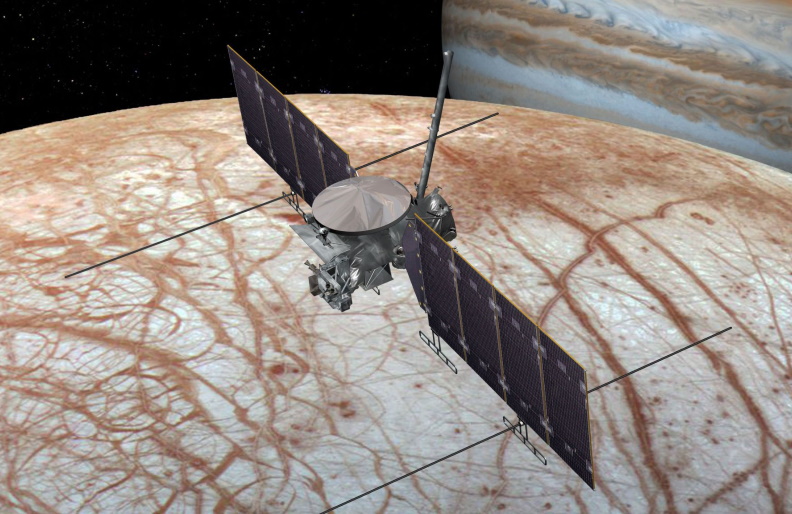NASA is moving ahead with an ambitious mission to explore a moon of Jupiter and discover whether it could support life.
The icy world Europa has the smoothest surface of any known solid object in the solar system, which – coupled with its apparent youth – has led scientists to believe that it could harbour an ocean beneath its outer crust.
It is a theory that has been well supported by a number of recent discoveries, including what were believed to be plumes of water spewing from the surface, as seen by astronomers through the Hubble Space Telescope.
Such conditions may mean extra-terrestrial biology is present, and NASA has given the all-clear for its Europa team to complete the final design of a spacecraft dedicated to exploring the moon.
It is hoped that the Europa Clipper vessel may be ready to launch as early as 2023, although the US space agency has only committed to it being good to go by 2025.
To do this, it will perform a number of close flybys, which should mean it avoids dangerous fields of radiation around the moon that could fatally damage the on-board electronics.
NASA says the radiation means the craft – which will use cameras and spectrometers to capture high-resolution images of the surface – will not be able to orbit the world for a sustained period of time.
Another hazard is shards of ice up to 15m (50ft) high, which could damage landing probes.
These issues have meant that it has taken years for NASA to get to this advanced stage, and the agency is excited by what could await when Europa is finally launched.
Thomas Zurbuchen, associate administrator for the science mission directorate at NASA headquarters in Washington, said: “We are all excited about the decision that moves the Europa Clipper mission one key step closer to unlocking the mysteries of this ocean world.
“We are building upon the scientific insights received from the flagship Galileo and Cassini spacecraft and working to advance our understanding of our cosmic origin, and even life elsewhere.”
The development of the craft is being led by a jet propulsion laboratory in Pasadena, California, and the mission is being managed from Marshall Space Flight Center in Huntsville, Alabama, which last week was chosen to be the base of operations for an upcoming return to the moon of Earth.
Originally published on SkyNews.

One comment